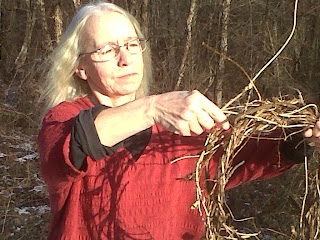 |
| Wattle Fence |
Add old-world charm
to your yard with an easy-to-build wattle fence
Wondering how to add unique style to your garden or yard at no cost? Consider a traditional twig fence, also called a wattle fence. Dating back to the Middle Ages and beyond, a hand-built wattle fence is an easy, attractive and sturdy outline for flower beds or other areas needing delineation. With just a few tools and a cluster of saplings, you can create your own eye-catching woven fence.
- Gather your tools: pruners, a good hand saw, a hatchet and a small sledge hammer
- With the saw, cut several large (up to two inches in diameter) saplings. These will be your upright posts, so after trimming the side branches, cut the saplings into lengths that correspond to the desired height of your fence, plus one foot. An overall length of three feet is good for your first wattle fence. Take your hatchet and chop a pointed end on each post.
- Pound the upright posts into the ground three to four feet apart. Try to get them in about a foot deep.
- With pruners in hand, cut down as many saplings as you can handle, up to a half inch in diameter and four to eight feet long. Poplars are flexible and easy to work with. Honeysuckle bushes also work great because they are fast growing and usually considered a pest—so why not create something beautiful out of them? After cutting the little trees, trim away the side branches and leaves.
- Now for the fun part. Begin weaving the long, slender twigs along the upright posts. Overlap the pieces and tuck in the ends, but don’t worry about being precise or overly even. Keep it natural. Remember, your wattle fence is a tribute to an ancient custom.



